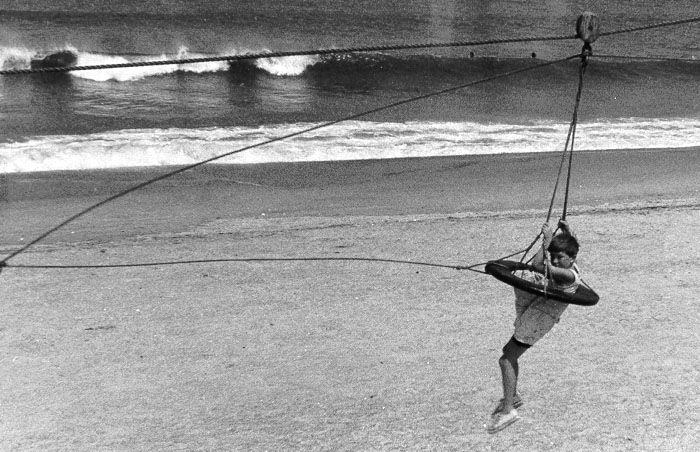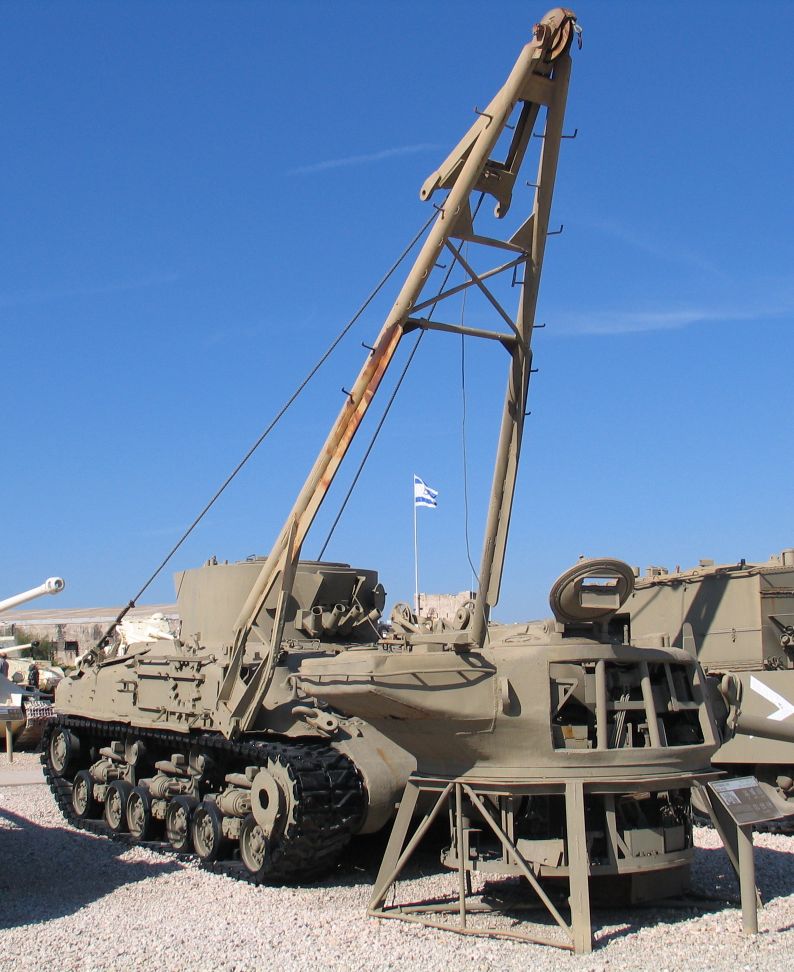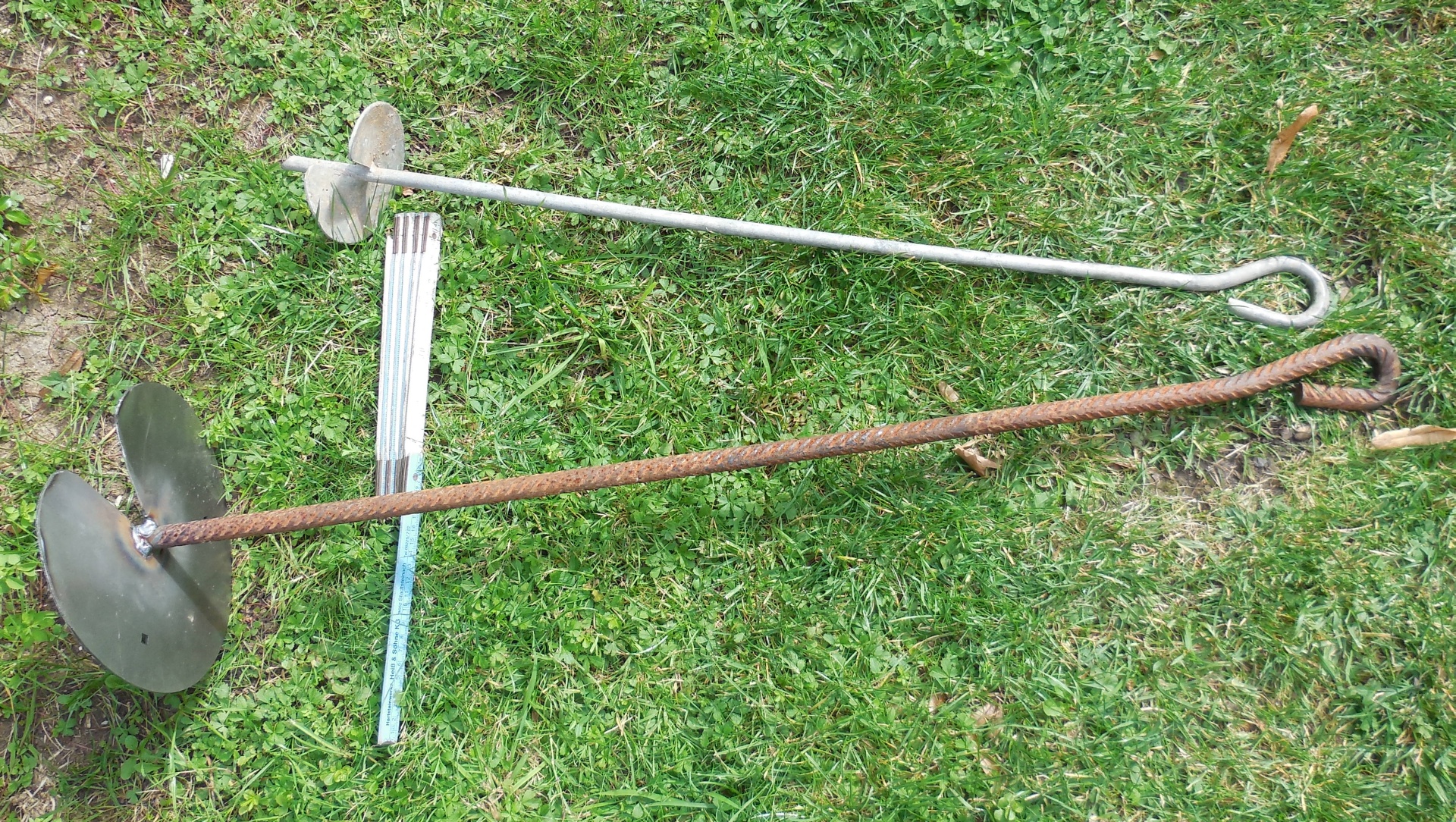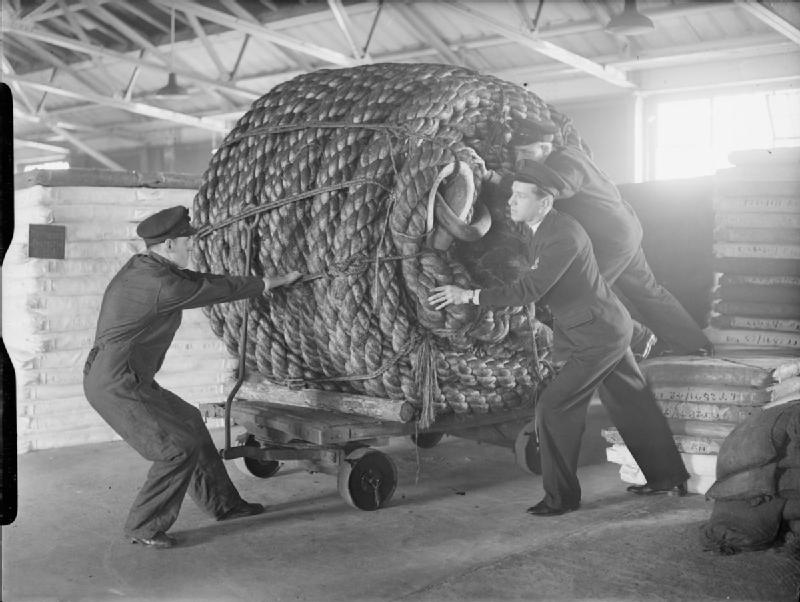|
Breeches Buoy
A breeches buoy is a rope-based rescue device used to extract people from wrecked vessels, or to transfer people from one place to another in situations of danger. The device resembles a round emergency personal flotation device with a leg harness attached. It is similar to a zip line. The breeches buoy may be deployed from shore to ship, ship to ship, or ship to shore using a Manby mortar, rocket, kite system, or a Lyle gun, and allowed evacuations of one person at a time. A line is attached to the ship, and the person being rescued is pulled to shore in the breeches buoy. History An early rescue using the equipment took place in 1866. The correspondent of the Scotsman, wrote :— Described as the first use of the apparatus, a re-enactment took place 150 years later. Eventually the Manby mortar was replaced by rockets to shoot lines to ships in distress. In 1967 a documentary on the inventor George Manby was made. Locations included Denver, Downham Market and Great Y ... [...More Info...] [...Related Items...] OR: [Wikipedia] [Google] [Baidu] |
Breeches Buoy During The Rescue Of The SS Northern Pacific (1914) In 1919
Breeches ( ) are an article of clothing covering the body from the waist down, with separate coverings for each human leg, leg, usually stopping just below the knee, though in some cases reaching to the ankles. Formerly a standard item of Western world, Western men's clothing, they had fallen out of use by the mid-19th century in favour of trousers. Modern athletic garments used for English riding and fencing, although called ''breeches'' or ''britches'', differ from breeches. Etymology ''Breeches'' is a double plural known since c. 1205, from Old English , the plural of "garment for the legs and trunk", from the Indo-European root *bhrg- "break", here apparently used in the sense "divide", "separate", as in Scottish Gaelic briogais ("trousers"), in Breton bragoù ("pants"), in Irish bríste ("trousers") and brycan/brogau in Welsh. Cognate with the Proto-Germanic language, Proto-Germanic word ''*brōk-'', plural ''*brōkiz'', itself most likely from the Proto-Indo-European roo ... [...More Info...] [...Related Items...] OR: [Wikipedia] [Google] [Baidu] |
Sea Scouts
Sea Scouts are a part of the Scout movement, with a particular emphasis on boating and other water-based activities on the sea, rivers or lakes (canoeing, rafting, scuba, sailboarding). Sea Scouts can provide a chance to sail, cruise on boats, learn navigation, learn how to work on engines and compete in regattas. Sea Scouts often have distinctive uniforms. In some countries or Scout organizations, Sea Scouting is a program just for older Scouts. History One of the earliest records of "Sea Scouts" is in ''Chums'' magazine which refers to "Sea Scouts" as early as July 1909. These Sea Scouts were part of the Chums Scouts and British Boy Scouts. Also in the ''Chums'' magazine, the British Boys Naval Brigade, later National Naval Cadets, were subtitled 'Scouts of the Sea' from the 14 July 1909 edition and, from the 28 July 1909 edition, 'Sea Scouts of the Empire'. The British Boy Scouts and an original company of The National Naval Cadets were both headquartered in Batterse ... [...More Info...] [...Related Items...] OR: [Wikipedia] [Google] [Baidu] |
Cleat Hitch
{{disambig ...
Cleat may refer to: * Cleat (nautical), a fitting on ships, boats, and docks to which ropes are tied * Cleat, Orkney, a place in Scotland * Cleat (shoe), a type or part of a shoe * ''Cleats'' (comic strip), a comic strip by Bill Hinds * Grouser, a protrusion on a wheel or continuous vehicle track, intended to increase traction * Fractures in coal seams * French cleat, a type of molding See also * Clete Clete is a given name. Notable people with the name include: *Greek mythological figures: **Clete or Cleta, one of the Charites ** Clete (Amazon), companion of Penthesilea *Astronomy: ** 385695 Clete, a minor planet *People: **Clete Blakeman (born ... [...More Info...] [...Related Items...] OR: [Wikipedia] [Google] [Baidu] |
Bowline On A Bight
The bowline on a bight is a knot which makes a pair of fixed-size loops in the middle of a rope. Its advantage is that it is reasonably easy to untie after being exposed to load. This knot can replace the figure-eight loop knot when tying into a climbing harness. It is one of the two tie-in knots that are being taught by the German Alpine Club (DAV), generally being considered secure. Dangers 2011 testing shows that the knot might slip when only one loop is loaded. Cavers and canyoneers ought to fasten their cow-tail carabiner through both loops. Video with genuine ''et voilà!'' ending European cavers widely advocate the use of a figure eight twisted version of the bowline on a bight. Applications This knot can be used to provide a toe hold in the middle of a rope; to make an emergency bosun's chair; and to create an upper rope "block" to make a crude purchase by threading the rope round an anchor point and then back up through the loop. It is sometimes used in sport climbin ... [...More Info...] [...Related Items...] OR: [Wikipedia] [Google] [Baidu] |
Breeches
Breeches ( ) are an article of clothing covering the body from the waist down, with separate coverings for each human leg, leg, usually stopping just below the knee, though in some cases reaching to the ankles. Formerly a standard item of Western world, Western men's clothing, they had fallen out of use by the mid-19th century in favour of trousers. Modern athletic garments used for English riding and fencing, although called ''breeches'' or ''britches'', differ from breeches. Etymology ''Breeches'' is a double plural known since c. 1205, from Old English , the plural of "garment for the legs and trunk", from the Indo-European root *bhrg- "break", here apparently used in the sense "divide", "separate", as in Scottish Gaelic briogais ("trousers"), in Breton bragoù ("pants"), in Irish bríste ("trousers") and brycan/brogau in Welsh. Cognate with the Proto-Germanic language, Proto-Germanic word ''*brōk-'', plural ''*brōkiz'', itself most likely from the Proto-Indo-European roo ... [...More Info...] [...Related Items...] OR: [Wikipedia] [Google] [Baidu] |
Coxswain
The coxswain ( , or ) is the person in charge of a boat, particularly its navigation and steering. The etymology of the word gives a literal meaning of "boat servant" since it comes from ''cock'', referring to the cockboat, a type of ship's boat, and ''swain'', an Old English term derived from the Old Norse ''sveinn'' meaning boy or servant. In 1724, a "cockswain" was defined as "An officer of a ship who takes care of the cockboat, barge or shallop, with all its furniture, and is in readiness with his crew to man the boat on all occasions." When the term "cockboat" became obsolete, the title of coxswain as the person in charge of a ship's boat remained. Rowing In rowing, the coxswain sits in either the bow or the stern of the boat (depending on the type of boat) while verbally and physically controlling the boat's steering, speed, timing and fluidity. The primary duty of a coxswain is to ensure the safety of those in the boat. In a race setting, the coxswain is tasked with m ... [...More Info...] [...Related Items...] OR: [Wikipedia] [Google] [Baidu] |
Shear Legs
Shear legs, also known as sheers, shears, or sheer legs, are a form of two-legged lifting device. Shear legs may be permanent, formed of a solid A-frame and supports, as commonly seen on land and the floating sheerleg, or temporary, as aboard a vessel lacking a fixed crane or derrick. When fixed, they are often used for very heavy lifting, as in tank recovery, shipbuilding, and offshore salvage operations. At dockyards they hoist masts and other substantial rigging parts on board. They are sometimes temporarily rigged on sailboats for similar tasks. Uses On land Shear legs are a lifting device related to the gin pole, derrick and tripod (lifting device). Shears are an A-frame of any kind of material such as timbers or metal, the feet resting on or in the ground or on a solid surface which will not let them move and the top held in place with guy-wires or guy ropes simply called "guys". Shear legs only need two guys whereas a gin pole needs at least three. The U. S. Army Fie ... [...More Info...] [...Related Items...] OR: [Wikipedia] [Google] [Baidu] |
Endless Whip
Endless or The Endless may refer to: Business * Endless (private equity), a British firm * Endless.com, an e-commerce website selling shoes and accessories * Endless Computers, an American operating system company Film * ''The Endless'' (film), a 2017 American film * ''Endless'' (2020 film), an American film Music * ''Endless'' (Frank Ocean album), 2016 * ''Endless'' (The McClymonts album) or the title song, 2017 * ''Endless'' (EP) or the title song, by Unearth, 2002 * "Endless" (Inna song), 2012 * "Endless" (Sakanaction song), 2011 * "Endless" (VAX song), 2018 * "Endless", a song by Cory Asbury from ''Reckless Love'', 2018 * "Endless", a song by Dickie Valentine, 1954 * "Endless", a song by the McGuire Sisters, 1956 * "Endless", a song by Toto from '' Isolation'', 1984 Other uses * Endless (artist), British graffiti and street artist * Endless (comics) or The Endless, a fictional group of characters in the comic book series ''The Sandman'' * Endless Mountains, Pennsylv ... [...More Info...] [...Related Items...] OR: [Wikipedia] [Google] [Baidu] |
Cleat (nautical)
In nautical contexts, a cleat is a device for securing a rope. Types Types of cleat designs include the following: * A horn cleat is the traditional design, featuring two “horns” extending parallel to the deck or the axis of the spar, attached to a flat surface or a spar, and resembling an anvil. * A cam cleat in which one or two spring-loaded cams pinch the rope, allowing the rope to be adjusted easily, and quickly released when under load. * A jam cleat in which the line is pinched in a v-shaped slot. * A clam cleat (or jam cleat) in which the rope is held between two fluted stationary pieces. Such a cleat vaguely resembles two halves of a clam shell held back to back. It is more compact than a cam cleat, but the rope is less easily released under load. A cleat hitch is a knot used to secure a rope to a cleat. Tied cleat.jpg, A line tied with a cleat hitch to a horn cleatAshley 1993, p. 286. on a dock. The line comes from a boat off the top of the picture, around the ri ... [...More Info...] [...Related Items...] OR: [Wikipedia] [Google] [Baidu] |
Ground Anchor
An earth anchor is a device designed to support structures, most commonly used in geotechnical and construction applications. Also known as a ground anchor, percussion driven earth anchor or mechanical anchor, it may be impact driven into the ground or run in spirally, depending on its design and intended force-resistance characteristics. Earth anchors are used in both temporary or permanent applications, including supporting retaining walls, guyed masts, and circus tents. History The first practical earth anchor was invented in 1912 by Albert Bishop Chance in Centralia, Missouri, in response to an ice storm that knocked down his company’s telephone poles. The town of Centralia holds an annual Anchor Day Festival. Applications Earth anchors are typically used in civil engineering and construction projects, and have a variety of applications, including: * Retaining walls, as part of erosion control systems. * Structural support of temporary buildings and structures, [...More Info...] [...Related Items...] OR: [Wikipedia] [Google] [Baidu] |
Hawser
Hawser () is a nautical term for a thick cable or rope used in mooring or towing a ship. A hawser passes through a hawsehole, also known as a cat hole, located on the hawse.The American Heritage Dictionary of the English Language, third edition, Houghton Mifflin The asterisk ( ), from Late Latin , from Ancient Greek , ''asteriskos'', "little star", is a typographical symbol. It is so called because it resembles a conventional image of a heraldic star. Computer scientists and mathematicians often voc ... Company, pp. 829–30, References External links * {{Authority control Shipbuilding Sailboat components Sailing ship components Nautical terminology ... [...More Info...] [...Related Items...] OR: [Wikipedia] [Google] [Baidu] |
Crow's Nest
A crow's nest is a structure in the upper part of the main mast of a ship or a structure that is used as a lookout point. On ships, this position ensured the widest field of view for lookouts to spot approaching hazards, other ships, or land by using the naked eye or optical devices such as telescopes or binoculars. It should not be confused with the top, the platform in the upper part of each lower mast of a square-rigged sailing ship. According to William Scoresby Jr., the crow's nest was invented in the 19th century by his father, William Scoresby Sr., a whaler and also an Arctic explorer. However, Scoresby Sr. may simply have made an improvement on existing designs. Crow's nests appear in Egyptian reliefs as early as 1200 BC and on eighth to seventh century BC representations of Phoenician, Etruscan, and Boiotian ships. The crow’s nest disappears completely from depictions of ships after the seventh century, although the relationship between a raised vantage point a ... [...More Info...] [...Related Items...] OR: [Wikipedia] [Google] [Baidu] |



.jpg)


_p184_I_SCORESBYS_TUNNA.jpg)